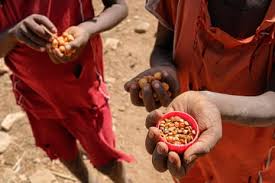Floods have displaced 300,000 people and damaged thousands of buildings, affecting one million people in Maiduguri, Nigeria. The deluge, which hit the northeastern city early last week, has been described as the worst in 30 years, leaving thousands homeless and worsening the already dire humanitarian situation.
Government reports confirm that at least 37 people have died due to the floods, which have submerged entire communities. The sudden disaster follows weeks of heavy rainfall that caused the Alau Dam, located just outside Maiduguri, to collapse for the third time since 1994.
The flooding has compounded challenges for a region already suffering from a decade-long insurgency by the Boko Haram militant group. Displaced people were previously living in makeshift camps, struggling with food shortages, and now face even more uncertainty.
Local authorities say more than a million people have been affected by the floods. The torrential rain, which began in July, is linked to climate change, according to experts. Unusually high levels of rainfall across West and Central Africa have impacted over four million people, from Liberia to Chad.
Northeast Nigeria typically receives less rainfall than other regions during the July to September rainy season, but this year’s rains have been extreme, leading to widespread devastation.
In Maiduguri, hundreds of thousands of people woke up on the morning of September 10 to find their homes flooded. Drone footage shows vast swaths of land almost completely submerged. In some areas, only the roofs of buildings are visible above the muddy waters.
Residents who were unable to evacuate in time became trapped, prompting frantic rescue efforts by local officials. Government workers and soldiers were deployed with trucks and canoes to rescue those stranded in the floodwaters. However, in some parts of the city, the waters were so high that even rescuers could not gain access.
One of the affected areas is Gubio Camp, which is now home to thousands of displaced people. Fati Laminu, a resident, described how her family tried to block the rising waters with sandbags, but the force of the flood quickly overwhelmed their efforts. “The water reached our knees, then our stomachs and our chests. That was when the children started drowning. Luckily, some men helped in rescuing us,” she said. Laminu lost her younger brother in the floods, and her brother-in-law’s body was found floating in the water.
Meanwhile, the Sanda Kyarimi Park Zoo, located in Maiduguri’s city centre, has reported that 80 percent of its wild animals either died or escaped after their enclosures were destroyed by the floods. Among the missing animals are snakes, lions, and crocodiles. One child has already died from a snake bite in a displaced person’s camp.
Authorities are working to provide shelter for the displaced, but the conditions remain dire. Many are without food, proper shelter, or medical care, and fears of disease outbreaks are growing. Despite the challenges, efforts are underway to restore order and assist those affected by the catastrophe.














Leave a comment